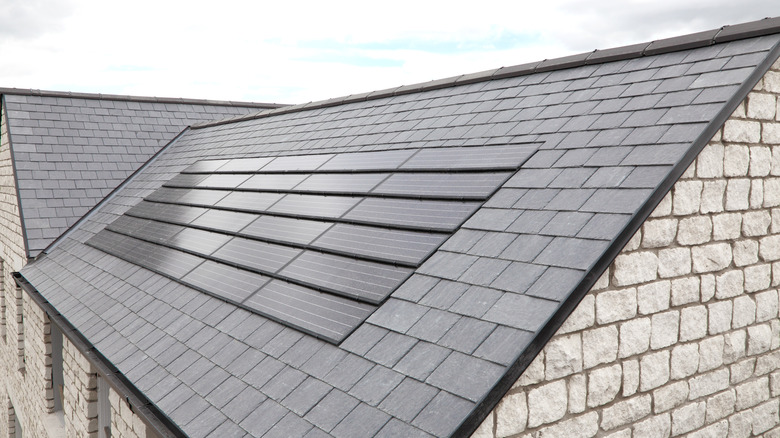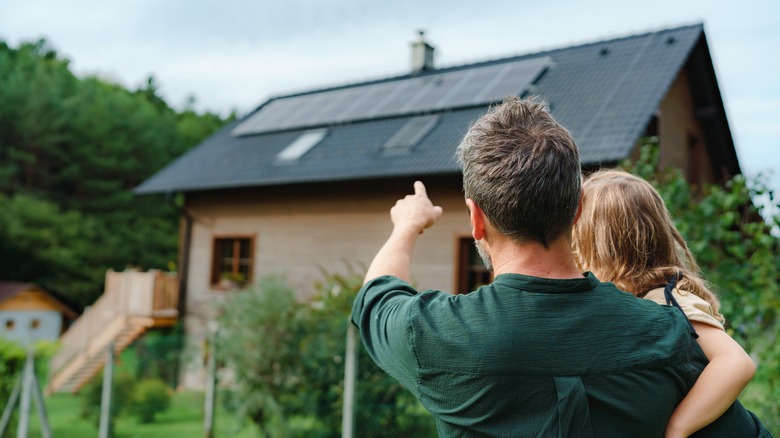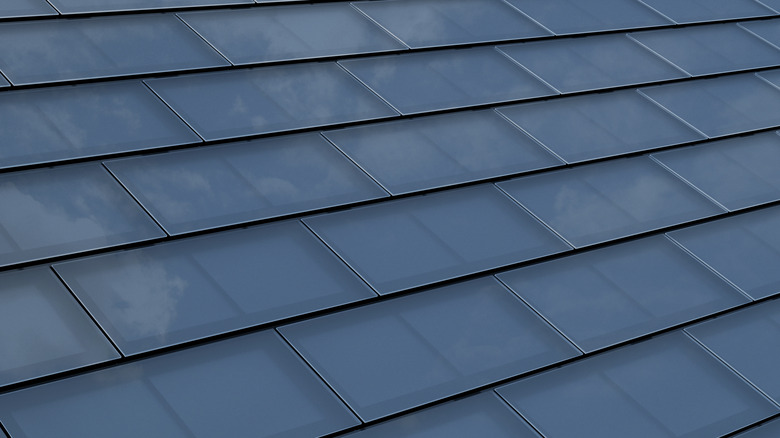Solar Panels Vs. Solar Shingles: Which Are Better?
Deciding to embrace solar power for your home is a big deal, and there are a lot of things to keep in mind when shopping around. Beyond simply deciding between installation companies, though, you also have to figure out what kind of solar panels you want to use. Or do you even want to use panels when you could opt for solar shingles instead?
The decision doesn't get any simpler if you opt for the latter, unfortunately. While you won't have to sift through quite as many nuanced makes and models if you decide to go the shingle route, there are other differences between the two that you'll want to remember — some of which are pretty significant.
None of this is to say solar shingles are a bad choice, though. In some situations, they might even be the better one. What you need to do first is figure out how each solar option will work for you.
Solar panel specifics
Solar panels are exactly what the name implies: They're panels that use solar energy — specifically to produce electricity. That electricity can power devices of all shapes and sizes, vehicles, or entire buildings.
They come in many shapes, sizes, and models for consumer use (as well as plenty for industrial and scientific purposes), usually in the form of large framed panels mounted on small supports. Attaching solar panels this way allows them to be angled to catch sunlight better (for more efficient energy output).
Installing a solar system can be a big commitment as there are a lot of financial, structural, and sometimes legal factors to consider. As long as you have the space and money for the installation they can usually save you money on energy bills in the long run. It's always a good idea to do your homework before committing to a big home improvement project like this, though, to make sure it'll be feasible.
How are solar shingles different?
On an extremely basic level, solar shingles (sometimes called "solar roofing" or "solar roof tiles") are solar panels that are smaller, thinner, and sit flush against the roof rather than being mounted slightly above it. That said, some things set the two solar technologies apart.
These shingle-sized solar tiles don't look much different from regular roof shingles from a distance. Unlike full-sized panels they aren't set up in only one section of the roof, either. Instead, they cover the entire surface — just like and in place of regular roof shingles — to the point where they aren't immediately noticeable most of the time.
Solar shingles also perform the same roof-protecting duties as regular shingles by protecting it from inclement weather and are designed to be durable enough to handle the responsibility. But of course, they do the solar thing as well by supplying your home with power absorbed by sunlight.
Pros and cons
The most immediately obvious perk to solar shingles is their inherent ability to look like regular shingles. Unlike solar panels, anyone passing by a home covered in solar shingles probably isn't going to realize they're even there.
They also completely replace regular shingles, meaning they'll (technically) reduce building material costs. Though the solar shingles aren't free, and these savings on building materials won't apply if you're replacing roof tiles that are already in place.
Speaking of savings, you're not likely to find any when it comes to solar shingle installation. As noted by MarketWatch, solar shingles tend to be more costly than traditional solar options (around $20 to $30 per square foot on a 2,000-square-foot roof, compared to solar panels costing around $15). Additionally, while it's not difficult to source regular solar panels and have them installed by a reputable company, solar shingles aren't as prolific. So not only are you likely to have to pay more upfront, but you'll also have fewer options to choose from — and you'll have to put in more work to find them.
Beyond the costs and logistics, efficiency is also something solar shingles fall short on compared to their larger counterparts, topping out at around 14- to 18 percent (modern higher efficiency solar panels are closer to 25 percent). Regular panels typically last a few years longer than shingles, though the difference isn't quite as significant.
Which is the better choice?
Shingles are the clear winner for aesthetics since they're practically indistinguishable from regular roof tiles at a glance. They'll also protect your roof instead of regular shingles, of course, and should last longer than regular non-solar roof shingles.
That said, while more traditional solar panels may not be as visually pleasing (or stealthy), they offer more bang for your buck for power output — they tend to last a few years longer. Regular panels can also be adjusted to optimize light absorption if the sun's position changes dramatically throughout the seasons. And since they're not permanently attached to the roof like shingles, you can use them on a wider variety of roof types or even pack them up and bring them with you when you move.
So much of what makes panels or shingles the more agreeable choice has to do with location, budget, and personal interests. Ultimately, it's all a matter of what you want from your solar setup and what's within your means.




